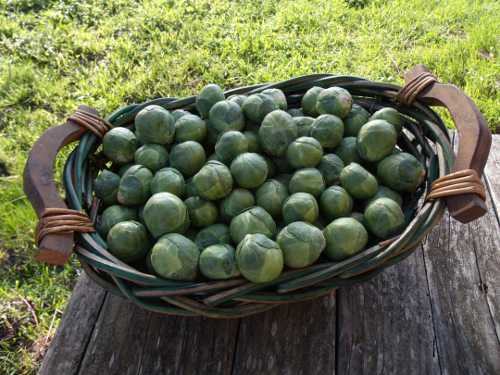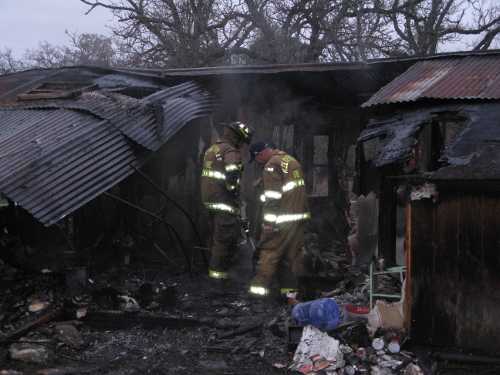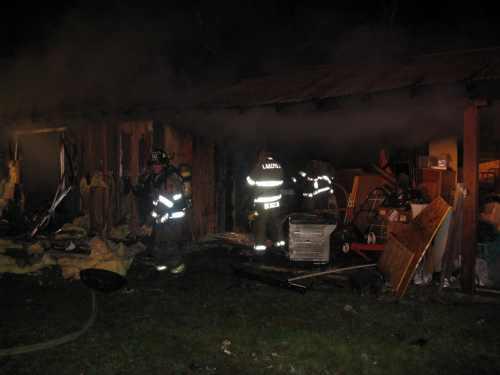 A tony Brooklyn newspaper says that 2012 is the year of the Brussels sprout, and I’m inclined to believe them.
A tony Brooklyn newspaper says that 2012 is the year of the Brussels sprout, and I’m inclined to believe them.
These “miniature cabbages” are finally gaining the respect they deserve. They’ve become the darling of urban chefs, and home cooks are buying them in record quantities.
And it’s no wonder. Not only are they amazingly nutritious, we’ve at long last grown beyond the bitter boiled versions served up on the dinner tables of our childhoods.
These compact little balls of leaves are, not surprisingly, members of the cabbage family, and are related to other cruciferous vegetables such as broccoli, kale, collards, and cauliflower.
While we know that the ancient Romans cultivated Brussels sprouts, their exact origin is unknown. The first written reference to them is from the 16th century in what is now Belgium, and they may have been cultivated there as early as the 13th century. Their name is a reference to the capital of this country.
When the main head of a cabbage plant is removed, smaller heads appear along the stem, and Brussels sprouts are a result of selecting and breeding those plants that best display this quality.
Brussels sprouts were introduced to the U.S. in the 1700s by French settlers in Louisiana, but weren’t cultivated here until the early 20th century. Prior to that, they were the purview of home gardeners, including Thomas Jefferson, who grew them at Monticello.
Fall, winter and early spring are harvest time for Brussels sprouts in California.
They enjoy cool weather and are at their best when temperatures are between 59 and 64 degrees Fahrenheit. For this reason, the foggy coastal counties of San Mateo, Santa Cruz and Monterey in California are a perfect environment for them, and most of the U.S. crop is grown there.
Like all cabbage family members, Brussels sprouts contain sulfur in the form of sulforaphane, which causes an unpleasant smell if they’re old or overcooked.
When shopping for Brussels sprouts, look for heads that are tightly-formed and have a lively green color, whether blue-green, light green or dark green.
The smaller and younger the sprout, the more pleasing the taste. Any yellowing on the leaves or stem ends is an indication of age, with consequent bitterness and toughness.
If possible, choose heads that are no more than one inch in diameter. This can be difficult, however, as most supermarkets stock sprouts which are larger than this.
In addition to avoiding those which are yellowed, stay away from any that are puffy or soft in texture.
At times, sprouts are sold on the thick stalks on which they’ve formed and grown. If purchased this way, store in a cool place with the sprouts intact on the stem, and they should keep for a couple of weeks or more.
If off the stalk, store unwashed and untrimmed sprouts in a plastic bag in the produce drawer of your fridge, where they should keep for up to 10 days, depending on their freshness when purchased.
Brussels sprouts are at their best when cooked quickly and may be boiled, steamed, sautéed, stir-fried, and even deep-fried. Roasting is one of the few successful long-cooking techniques with this vegetable.
The secret of preventing characteristic bitterness is to cook the freshest sprouts available and to avoid overcooking, which can also cause them to become mushy and unpalatable.
When steaming or boiling Brussels sprouts, five minutes should do the trick. A bit of time may be added if they’re cooked whole. They should retain their green color and be just tender.
Brussels sprouts are often paired with foods rich in fat and flavor, such as butter, cream, bacon, pancetta and cheese. Cheeses such as blue, cheddar, goat, Parmesan, provolone, ricotta, or Swiss are recommended as accompaniments in gratin and other dishes.
Other flavor companions are garlic, lemon, cider or white wine vinegar, thyme, and nuts such as almonds, hazelnuts, and chestnuts.
The leaves may be separated from the head and cooked, if desired, either by quickly sautéing with butter or olive oil and garlic or shallots, or by incorporating them into casserole-style dishes with pasta or rice.
Author, restaurant critic and organic gardener Jeff Cox recommends boiling Brussels sprouts till just tender and finishing in a sauté pan with olive oil and garlic.
Deborah Madison, acclaimed vegetarian chef, suggests boiling them until tender with bite-sized pieces of broccoli and cauliflower (which should be added after the sprouts have cooked for three minutes or so) and serving the medley with mustard-caper butter.
Though two other recipes are offered today, I couldn’t pass up the opportunity to share with you below how to make this wonderful butter.
The sulforaphane which creates overcooked Brussels sprouts’ sulfur-like smell and bitterness is also a cancer-fighting agent and one of the vegetable’s most healthful components. The level of its anticancer compounds is reduced, however, when Brussels sprouts are boiled. Thankfully, steaming, microwaving, and stir-frying don’t seem to diminish it.
Brussels sprouts are a good source of fiber and antioxidants such as vitamins C, E, and A. They also contain stores of potassium, folic acid, iron, vitamin B6, and thiamine.
Scientific studies have shown them to be effective in detoxifying the body, supporting the cardiovascular and digestive systems, acting as an anti-inflammatory agent, and, as mentioned above, reducing the risk of cancer.
In addition to the various methods of cooking Brussels sprouts, they are fantastic raw in a salad. One of today’s recipes is a simple and delicious salad utilizing this nutritious veggie.
The other recipe, also simply executed, is for a bright and tasty side dish. The recipe includes basic instructions for roasting Brussels sprouts.
And before I go, here’s something that can likely be put into the tried but failed file.
For a few days around Christmas 2010, the Burger King restaurants in the United Kingdom offered something they called a “Sprout Surprise Whopper,” which contained Brussels sprouts and Emmental cheese.
As much as I love Brussels sprouts, I don’t think I’d have the stomach for that combo!
Brussels sprouts salad
24 Brussels sprouts, washed and dried, woody ends cut off
8 ounces Gruyere cheese, grated fine
6 ounces walnuts, broken into small pieces
3 tablespoons apple cider vinegar
9 tablespoons extra-virgin olive oil
2 teaspoons Dijon mustard
1 teaspoon maple syrup (optional)
Kosher salt and cracked black pepper
Slice the Brussels sprouts thin on the slicing disc of the food processor, with a mandolin, or with a sharp knife.
Put the thinly-sliced sprouts in a large bowl. Add the cheese and walnuts.
Put the vinegar, olive oil, mustard, maple syrup (if using), salt and pepper into a small jar. Put on the lid and shake until the vinaigrette has come together. (Alternatively, place ingredients except olive oil in a bowl. Drizzle olive oil into mixture while whisking with a wire whisk.)
Dress the salad with the vinaigrette. Toss and serve.
This recipe makes eight servings and is courtesy of www.glutenfreegirl.com. It’s a favorite at the restaurant Picnic in Seattle.
Brussels sprouts with balsamic and cranberries
3 pounds Brussels sprouts
½ cup olive oil
Salt and pepper
1 cup balsamic vinegar
½ cup sugar (optional)
1 cup dried cranberries
Preheat oven to 375 degrees Fahrenheit.
Trim and clean Brussels sprouts and cut them in half. (You may leave them whole, if desired.)
Arrange on two baking sheets and toss with olive oil. Sprinkle with plenty of salt and pepper.
Roast in preheated oven until tender and brown, about 25 to 30 minutes. (This may take longer if Brussels sprouts are left whole.)
Meanwhile, combine balsamic vinegar and sugar in a saucepan and bring to a boil. Reduce heat to medium-low and simmer until liquid is reduced and thick, about 15 to 20 minutes.
Drizzle the balsamic reduction over the roasted sprouts, then sprinkle on the dried cranberries; toss to coat and mix. Serve immediately.
Note: The sugar adds a pleasant sweetness to the dish, but is not necessary for the balsamic vinegar to thicken and reduce.
This recipe has been featured on The Food Network and is courtesy of www.thepioneerwoman.com.
Mustard-caper butter
2 garlic cloves
Sea salt and freshly ground pepper
6 tablespoons unsalted butter at room temperature
2 teaspoons Dijon-style mustard, more or less
¼ cup drained small capers, rinsed
Grated zest of one lemon
3 tablespoons chopped fresh marjoram
Pound the garlic with ½ teaspoon salt in a mortar until smooth, and then stir it into the butter with the mustard, capers, lemon zest, and marjoram. Season with pepper. The butter may be made a day ahead and refrigerated. Bring it back to room temperature before serving.
Esther’s note: If a mortar is not available, coarsely chop the garlic and combine all ingredients in a food processor. Pulse until smooth.
This recipe by Deborah Madison is from “Local Flavors: Cooking and Eating from America’s Farmers’ Markets.”
Esther Oertel, a freelance writer, cooking teacher, and speaker, is passionate about local produce and all foods in the vegetable kingdom. She welcomes your questions and comments and may be reached at This email address is being protected from spambots. You need JavaScript enabled to view it..
Follow Lake County News on Twitter at http://twitter.com/LakeCoNews, on Tumblr at www.lakeconews.tumblr.com, on Google+, on Facebook at www.facebook.com/pages/Lake-County-News/143156775604?ref=mf and on YouTube at www.youtube.com/user/LakeCoNews .

 How to resolve AdBlock issue?
How to resolve AdBlock issue?  A tony Brooklyn newspaper says that 2012 is the year of the Brussels sprout, and I’m inclined to believe them.
A tony Brooklyn newspaper says that 2012 is the year of the Brussels sprout, and I’m inclined to believe them.























